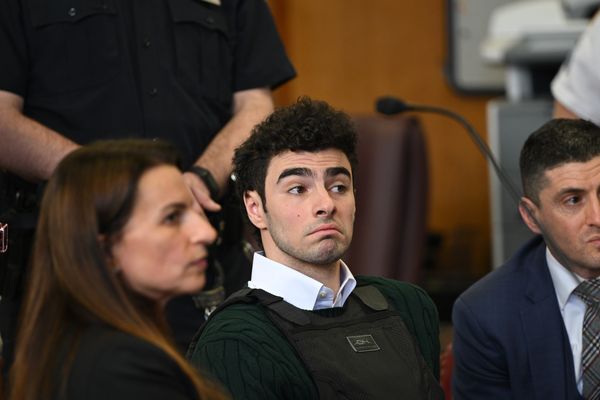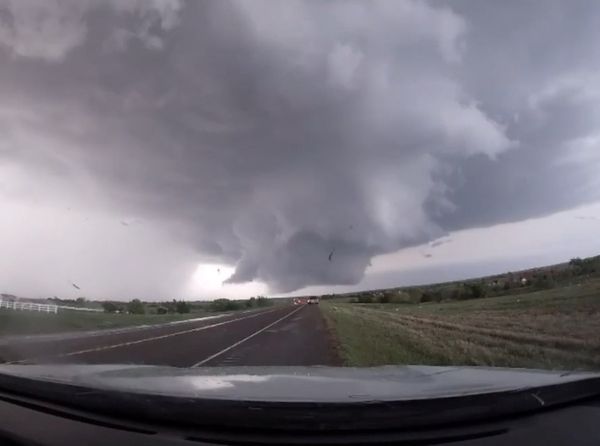
On 16 and 17 July, 1942, French police snatched close to 13,000 Jewish men, women and children from their homes in Paris in what was the largest operation of its kind in Western Europe. Most were taken to the Winter Velodrome before being sent to the death camps. Arlette Testyler, one of the last witnesses of "Vel d'Hiv", shares her story with RFI.
Polish-born Testyler was just eight and a half when police banged on her family home in central Paris in the early hours of 16 July, 1942.
While her older sister Madeleine lay sleeping, her mother opened the door.
"I saw two police officers holding a list. They said: 'we've come to arrest your husband'.
"My mother protested a bit saying he'd already been arrested, and they said 'well then it's you and your children'."
She recalls how her usually calm and collected mother started fighting the police.
"But it served no purpose at all, they took us like we were criminals."
At the request of the occupying Nazi regime, the French authorities had launched a massive roundup of Jews in Paris and the suburbs.
In the space of two days, some 12,884 people were arrested, including 4,000 children.
Testyler remembers leaving her building with three other Jewish families.
"It was a hot, muggy day in July but a few drops of rain fell. It felt like the sky was crying along with us," she tells RFI.

Dante's Inferno
Along with her mother and older sister, she was kettled onto a public bus and driven to the Winter Velodrome, a stadium-turned-internment camp near the Eiffel Tower.
"We reached this iron building, full of coaches, there were police everywhere but I never saw a German, ever, only police officers," she says.
Thousands of people were "crammed onto the stands" with no food, water or adequate toilet facilities. There was constant shouting, night and day.
It felt like entering Dante's Inferno.
"It was Dantesque, people were crying, children were screaming, trying to run away.
"There were invalids, maimed people, people on crutches, pregnant women. The only men there were old men. The children were under sixteen," she told RFI's Nathanaël Vittrant.
They had believed they were going to be sent to work in Germany, but as more elderly, mothers and children kept arriving, it became clear they'd been lied to. People became increasingly desperate.
"I saw a suicide," she says, "people mutilating themselves with knitting needles, anything they could get their hands on, hoping they'd get sent to hospital, but it was useless."
Anonyme. BHVP.
— ²⁶⁵k Paname Paris (@ParisAMDParis) July 16, 2022
Rafle du Vel' d'Hiv'
16 juillet 1942 Paris #VeldHiv pic.twitter.com/JYzBan5YhF
Cattle wagons
She has "foggy memories" of exactly how long they stayed at Vél d'Hiv, but they were eventually bussed to Austerlitz station in Paris.
"There wasn't a single non-Jewish passenger, it was boiling hot on the platform, and then we saw the cattle wagons."
The wagons had no windows, just wire meshing on either side – sufficient perhaps for animals to be able to get air through, but too high for small children.
She describes how her mother, Malka Reiman, pleaded with adults to "take a child in your arms, lift him up, help him breathe".
She finally got some air after someone heeded her mother's instructions.
Testyler is a life-long Parisien but has never returned to that station. "It's linked to too many painful memories," she says choking up for a brief moment.
Il y a 80 ans, la rafle du #VeldHiv. Les 16 et 17 juillet 1942, 13000 Juifs, dont 1/3 d'enfants sont raflés par la police française, parqués avant d'être déportés pour extermination. Il y a cette scène de Monsieur Klein (Joseph Losey - Alain Delon) Un monument. Ne jamais oublier. pic.twitter.com/VtXGSOsE16
— 𝔾𝕦𝕚𝕝𝕝𝕒𝕦𝕞𝕖 𝔸𝕦𝕕𝕒 (@GuillaumeAuda) July 16, 2022
Turning point
She and her family were interned in the Beaune-la-Rolande camp in central northern France.
After a few weeks, her mother somehow managed to get them out and back to Paris, where a non-Jewish family took in the girls and later smuggled them to Vendôme in the free zone.
They remained hidden until the Liberation in August 1944.
Testyler found out later that her father, Abraham Reiman, had died in Auschwitz.
Her mother survived the war, but not the loss of her husband, and died in 1946.
She says the cattle wagons marked a turning point in France as people realised Jews were not being sent to work in Germany, but to their deaths.
"When the French saw the cattle wagons with children's little hands [poking through], the old people, the bedridden, invalids, they said 'those people won't work' and it's from that moment that France woke up and saved Jews."

Countering the deniers
That's the message she passes on to children when she goes into schools to talk about Vél d'Hiv and the Holocaust.
She began telling her story, along with her husband, in 1995 when then-president Jacques Chirac recognised France's responsibility in the deportation of Jews.
In 1997, former prime minister Lionel Jospin declared: "This roundup was decided, planned and carried out by the French."
But while Testyler talks to children about the collaboration, she also tells them that "in all of Europe, France saved the most Jewish children".
She tells her story because teachers ask her to. But above all "it's for those that didn't come back" from the camps.
This is all the more important faced with Holocaust denial.
"If just 10 percent of the children will go on to say to the revisionists or Holocaust deniers 'No, I've seen them, they existed', then I feel like those who were killed in Auschwitz, because they were born Jewish, will not completely die."







